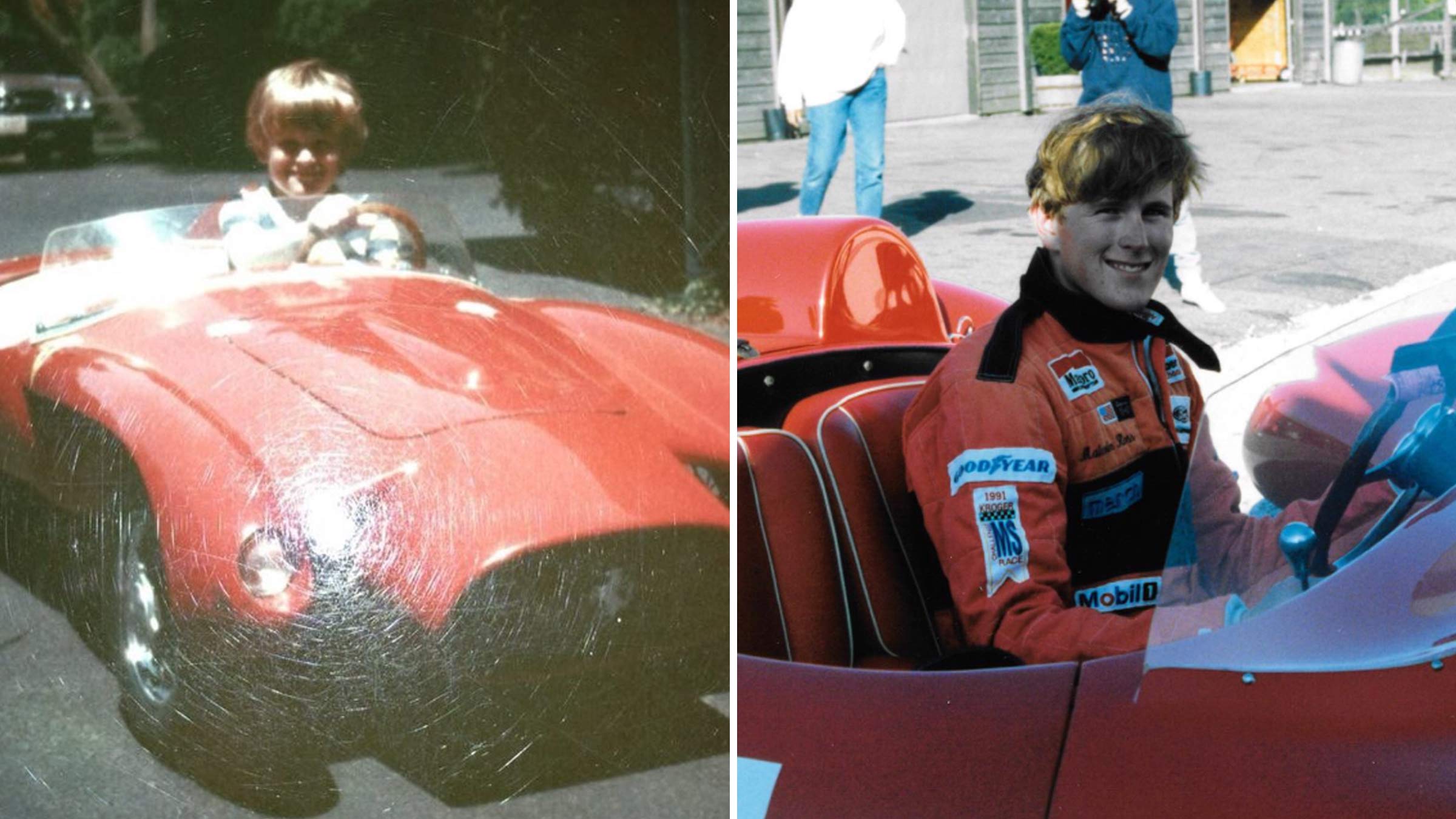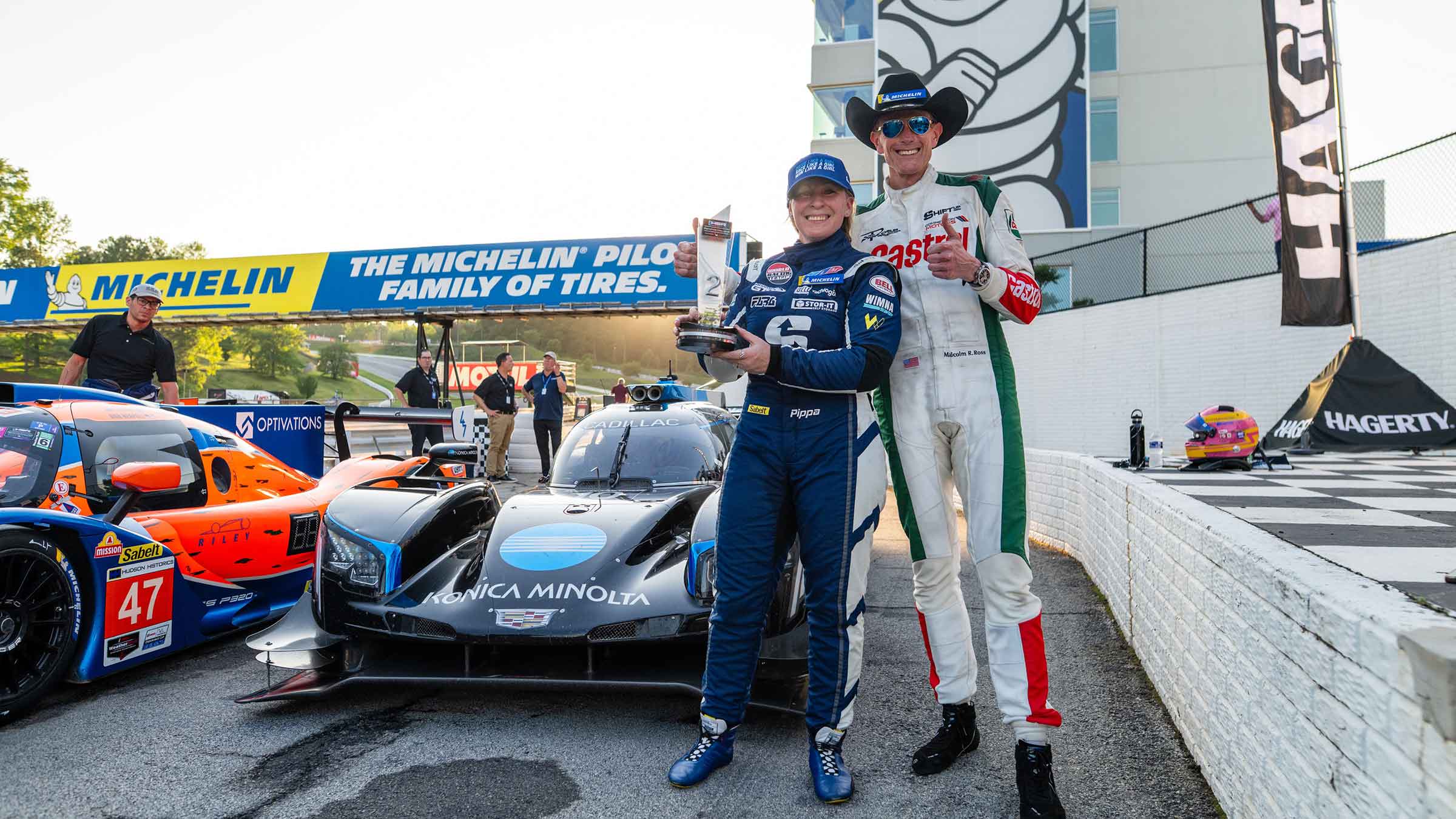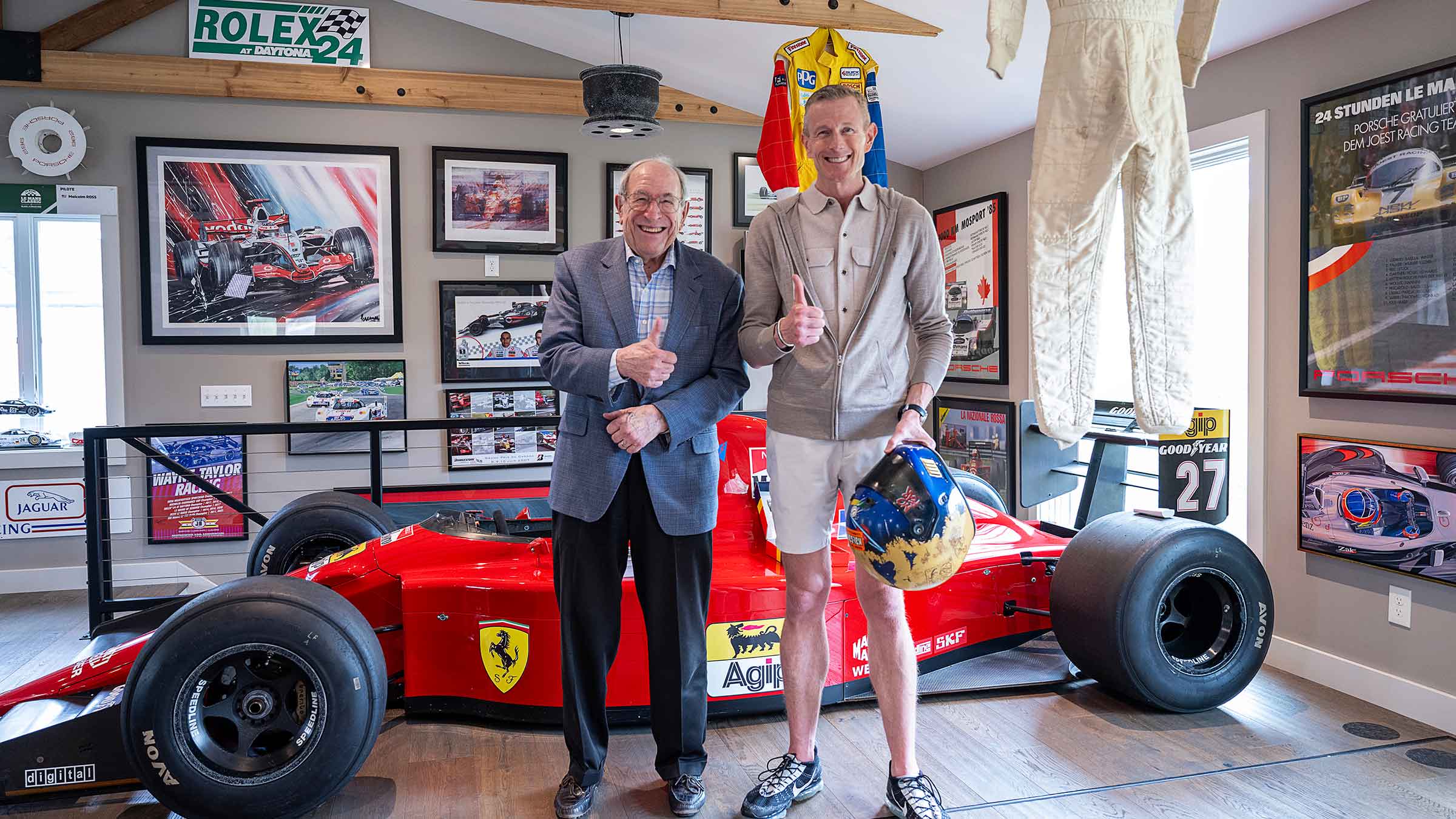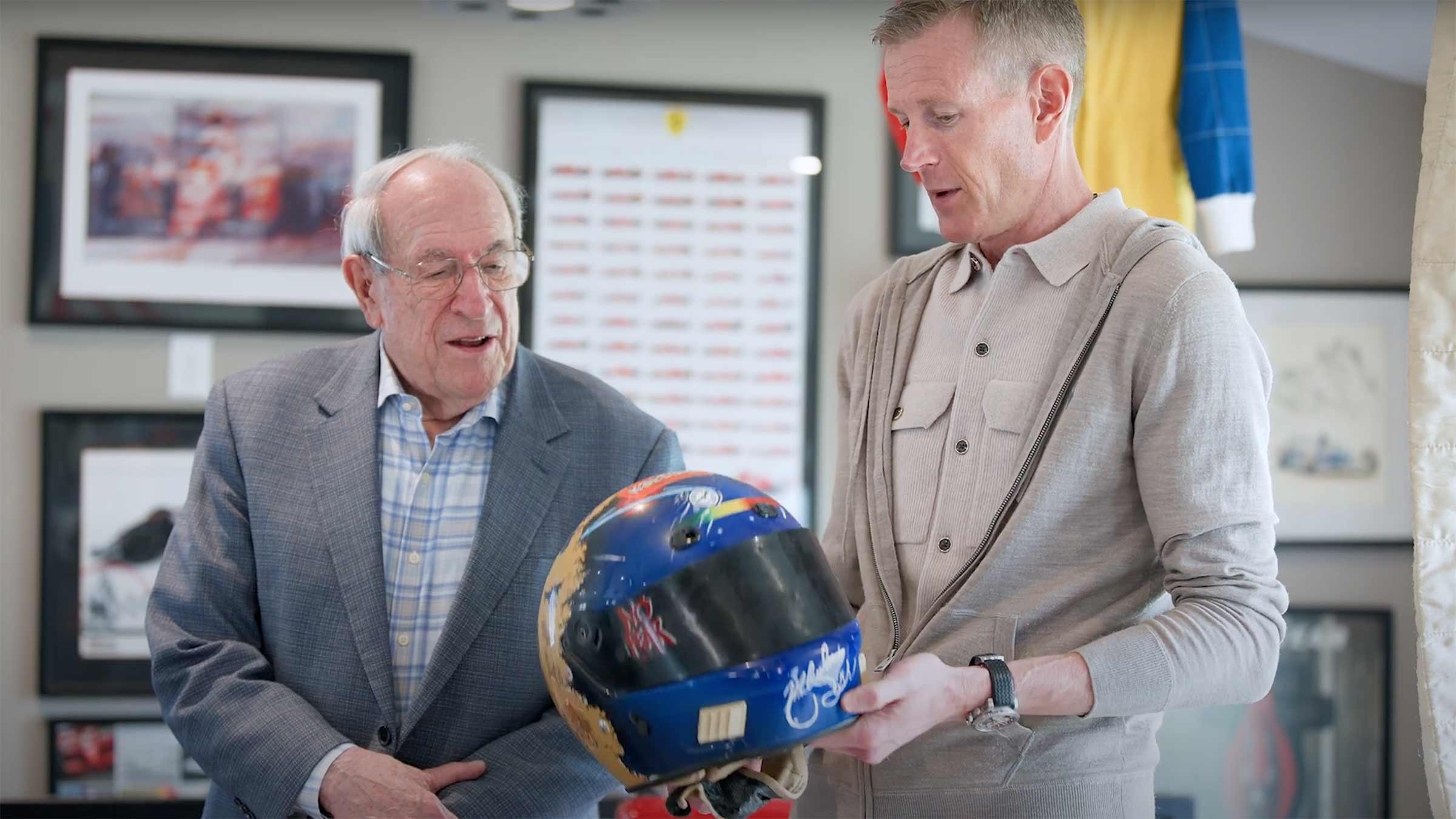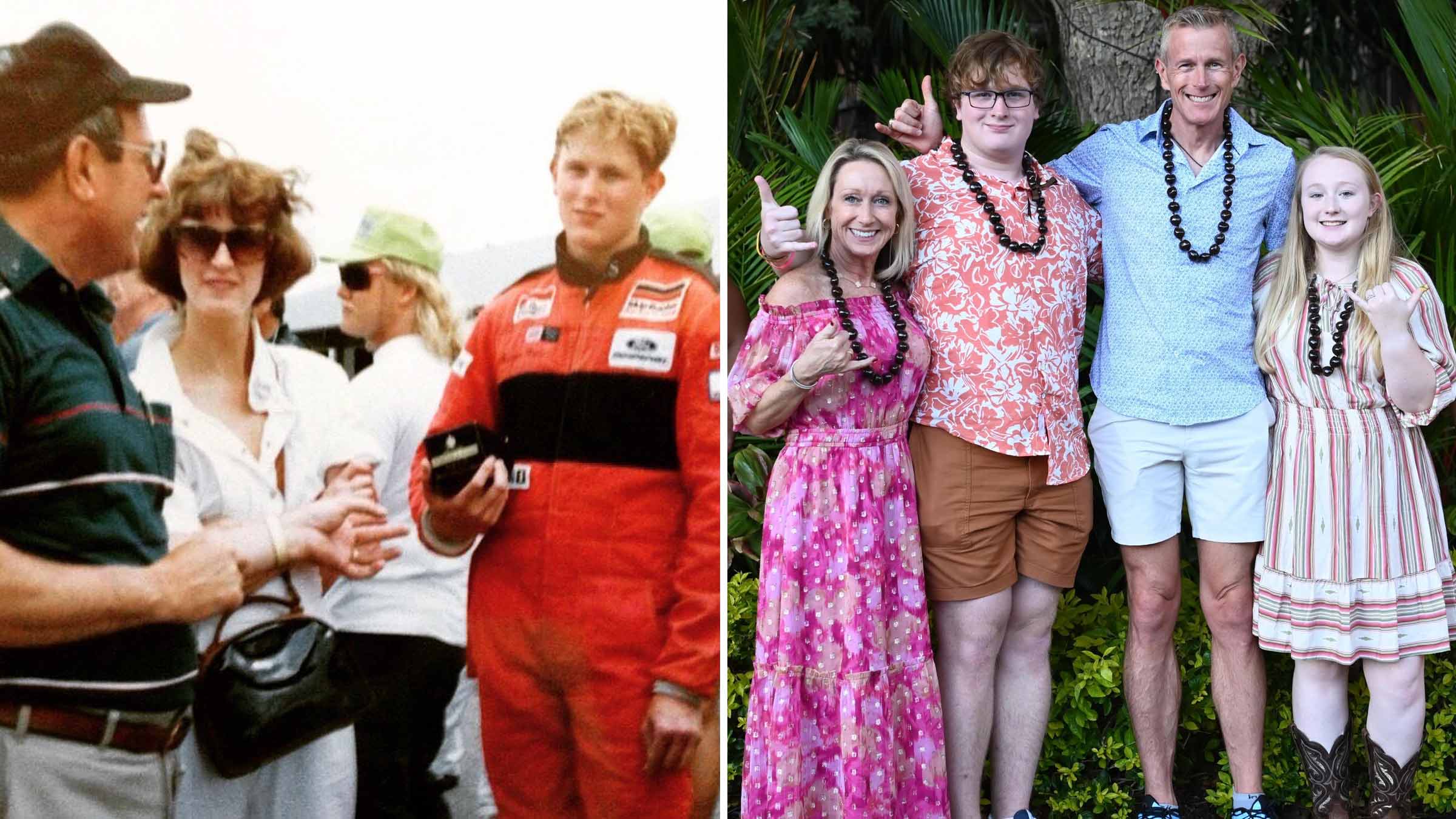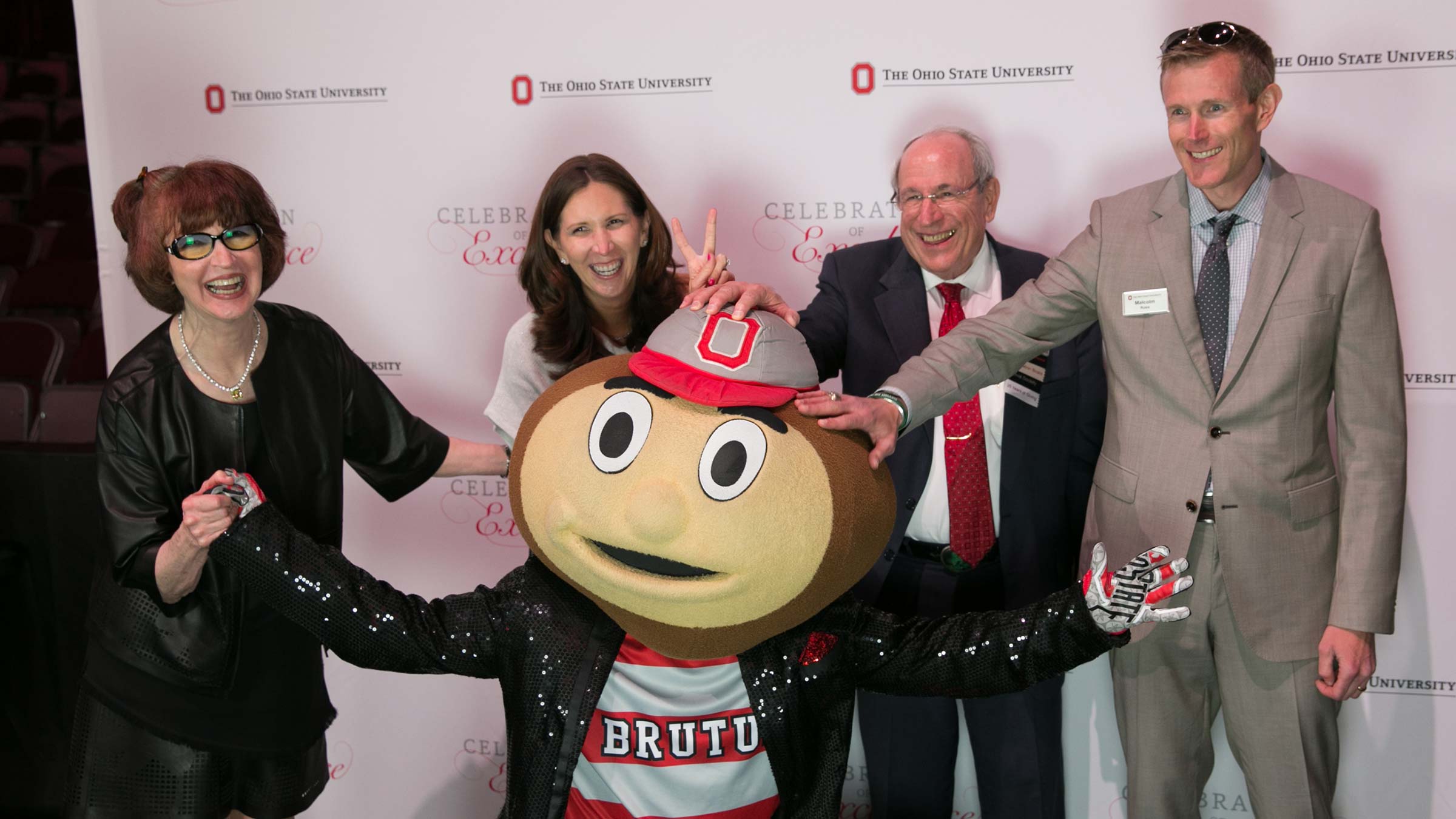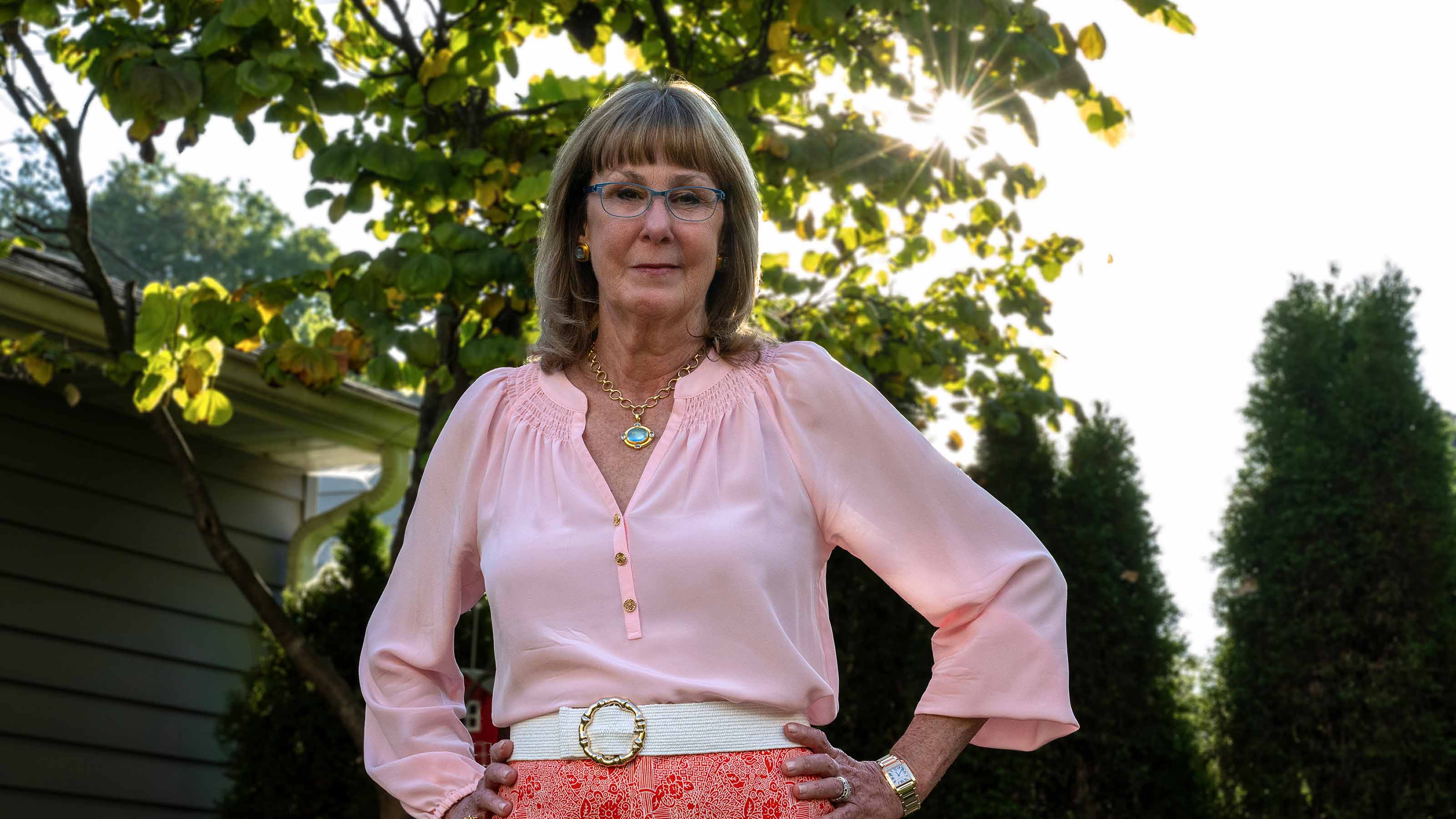Son’s care after traumatic brain injury sparks growing support of neurosciences
Stan and Jodi Ross give $10 million to advance neuroscience education, research and care at Ohio State.
On June 5, 1993, on the day of their son Malcolm’s high school graduation, Stan and Jodi Ross got a call no parent ever wants to receive.
While they and their daughter, Jenny, were at their home in Columbus, Ohio, Malcolm Ross wasn’t receiving his diploma nearby. He was instead 200 miles away, being airlifted to a hospital in Indianapolis, in critical condition.
When Malcolm Ross shares his story, he pauses often and looks at his father to confirm the details of a car accident he does not remember. “I don’t have any sort of coherent memories,” he says.
Malcolm Ross can only relay what he’s been told.
He was competing at the Indianapolis Raceway Park in a single-seat open-wheeler, a lightweight vehicle where the driver’s body fits tightly in the cockpit and the head is exposed to the air. When another racer got too close, their tires made contact and Malcolm Ross’ car launched 20 to 30 feet off the ground. He hit a concrete wall on the way down.
Stan and Jodi Ross remember the call all too well. “It was about 6 in the evening,” says Stan Ross. “We were told there had been a crash, so we threw stuff into the car and headed out.”
Throughout the three-hour drive to Indianapolis, Stan and Jodi Ross called the hospital to check on their son’s progress every half hour.
“At first, it was looking pretty grim,” says Stan Ross. All they knew from the original call was that their son was alive when they put him in the helicopter. “We didn’t know what we were going to find, what to expect. But it wasn’t good news.”
The accident broke Malcolm Ross’ neck and lumbar spine, damaged his spinal cord and caused head trauma and collapsed lungs. He had to be resuscitated twice on the way to the hospital.
Finding traumatic brain injury rehabilitation at Ohio State
After a month of care and treatment in Indiana, Stan and Jodi Ross brought their son to The Ohio State University Wexner Medical Center.
“There was no question this was the place he needed to be. Dodd was one of the few rehabilitation centers the doctors in Indianapolis would approve of,” says Stan Ross.
When Malcolm Ross was admitted to the Ohio State Wexner Medical Center Dodd Rehabilitation Hospital, he says he was “kind of standing,” but couldn’t do it for too long. “I wasn’t really walking at that point,” he says.
“Injuries as severe as Malcolm Ross’ can significantly impair mobility and flexibility, cause difficulty with communication and swallowing and have various neurological complications, including partial or complete paralysis,” says Whitney Luke, MD, MBA, MBOE. She leads the rehabilitation program at the Ohio State Wexner Medical Center, one of the nation’s leaders in aiding patient recovery after a traumatic brain injury (TBI).
At Ohio State, Malcolm Ross received comprehensive care from a team of neurologists, physical therapists, rehabilitation nurses and other medical professionals for four months.
“I refer to it as a community because everyone was so supportive of each other,” says Malcolm Ross of his care team and fellow patients. “All I found at Dodd was support, love, kindness and a genuine interest in making sure that we all succeeded in whatever level we were. I saw so much good.”
When he arrived at Dodd, Malcolm Ross couldn’t push the buttons on a remote control. Thanks to the dedicated care from Ohio State’s experts, some of whom he stays in touch with to this day, Malcolm Ross walked away from the hospital — and on with his life — on his own two feet.
Now 51, Malcolm Ross says he has minimal lingering effects from the accident in 1993 — some numbness and hot/cold insensitivity in his hands and barely visible scars where a spinal halo was attached to his skull. “I sleep with lots of pillows,” he says with a smile, explaining that he can’t really sleep on his back anymore.
“The people at Ohio State spent so much time with me, making me understand what I needed to do,” says Malcolm Ross.
He says discipline and listening are not words he would use to describe himself as a teenager. “Dodd’s doctors and nurses achieved a pretty big thing,” he says, adding only half-jokingly, “I just don’t want to screw it up.”
Entering a race for lifesaving knowledge
Malcolm Ross’ near-miraculous recovery motivated his parents to begin supporting Ohio State’s Dodd Rehabilitation Hospital. It also sparked their lifelong curiosity of all things brain-related.
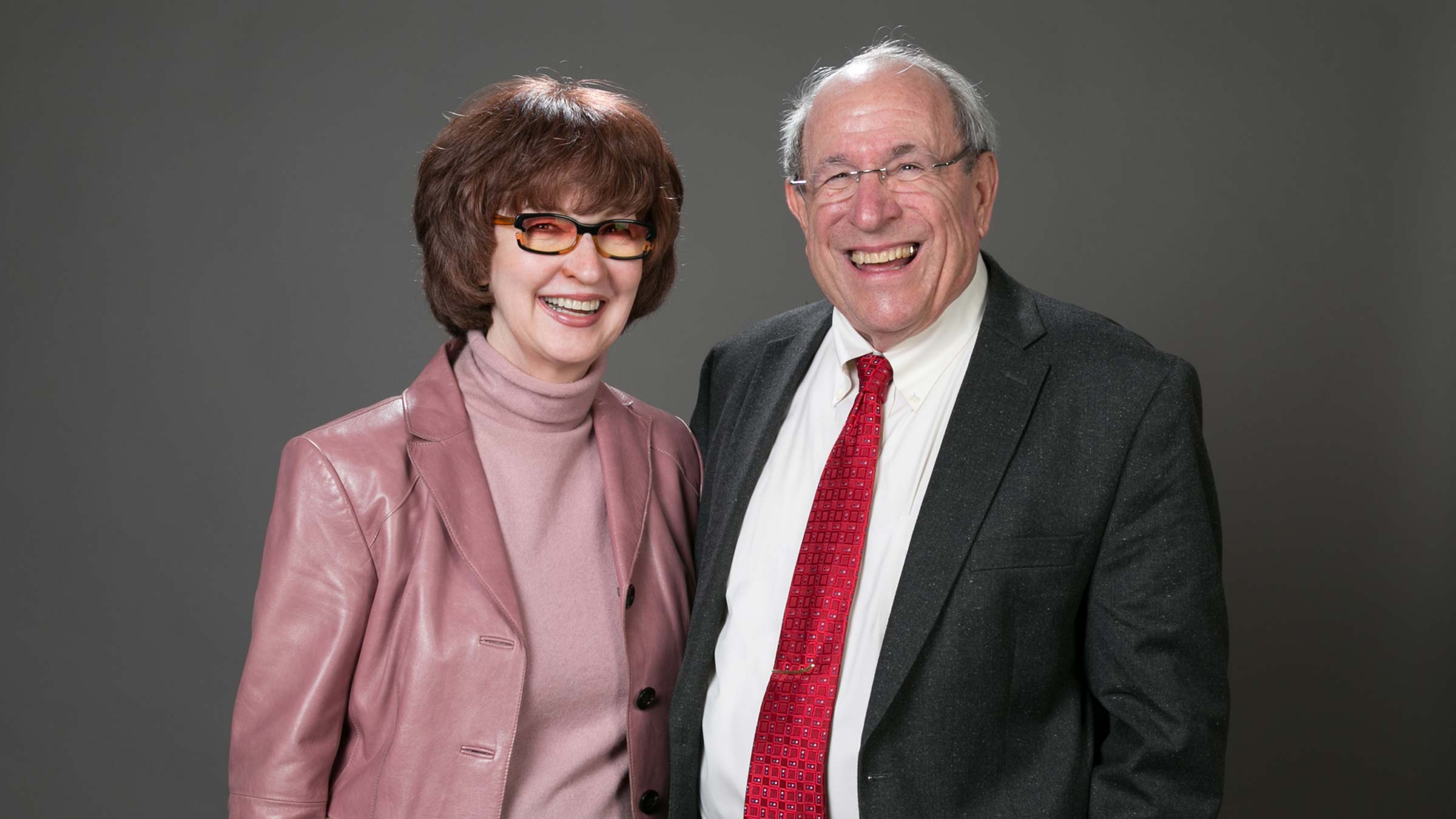
“We learned a lot about neurology from talking with the doctors and the therapists at Dodd,” Stan Ross says. “It is a fascinating subject.”
As the Ross’ fascination with neurology grew, so did their philanthropy.
The Ross’ giving to Ohio State spans decades and has included endowing The Stanley D. and Joan H. Ross Chair in Neuromodulation and $10 million to establish The Stanley D. and Joan H. Ross Center for Brain Health and Performance.
Upon making one of their many past gifts, Stan and Jodi Ross said they felt they had “set some wheels in motion” toward discoveries that could help the millions of people affected by neurological conditions and injuries. Considering their most recent commitment, this could be seen as an understatement — Stan and Jodi Ross are giving $10 million to support one of two 64,440-square-foot floors at Ohio State’s new hospital tower, dedicated to neurological conditions and care.
In these specialized floors, patients like Malcolm will receive inpatient care in spacious private rooms with nearby access to everything they need to heal and recover, from diagnosis to rehabilitation. If a patient requires surgery — a likely scenario in brain, spine and neurological conditions — they may be promptly scheduled in any of 22 operating rooms (ORs) throughout the new inpatient tower. Two of these are hybrid ORs, which means the patient’s surgical procedure is monitored and informed by simultaneous medical imaging.
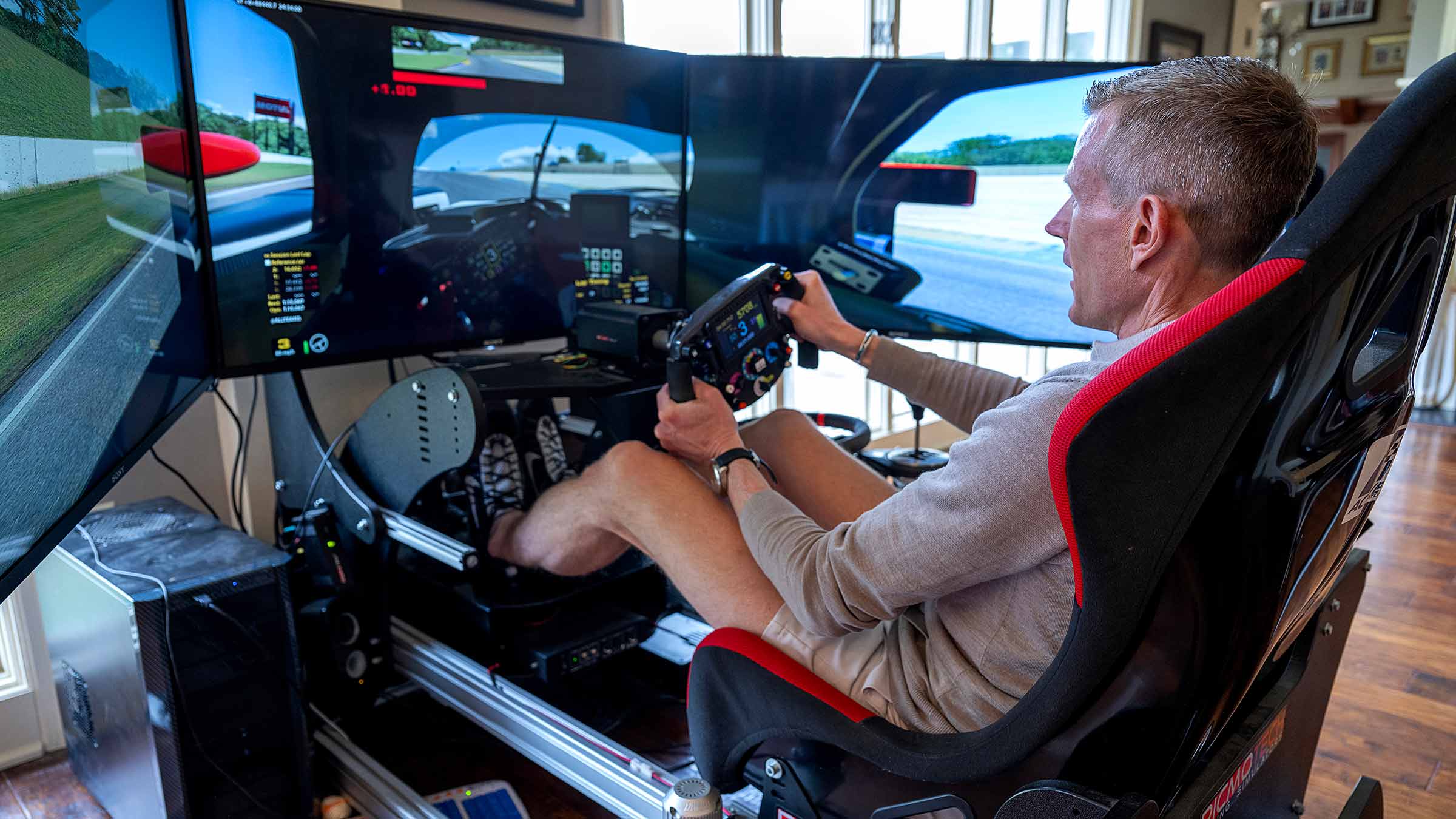
“We appreciate the Rosses’ ongoing support for brain research at Ohio State. Through their latest generous investment, Stan and Jodi are helping us envision a future where we can better understand and address neurological conditions and ultimately improve lives through relentless innovation,” says John J. Warner, MD, CEO of The Ohio State University Wexner Medical Center and executive vice president at Ohio State. “We are both tremendously grateful and proud that they have chosen to name the neurology floor of our new hospital tower, which will serve as a reminder of the important advancements we are making thanks to their transformational legacy of giving.”
More than 50 million people in the United States and 1 billion people worldwide have a neurological disorder. Stan Ross aptly refers to the varied and complex conditions that affect the brain and spine as “a big tent” or “umbrella.”
In Malcolm Ross’ case, a traumatic injury in his teens threatened to drastically change his lifestyle. Those affected by neurodegenerative conditions such as Alzheimer’s, neuromuscular conditions such as muscular dystrophy and brain conditions such as epilepsy, face similar and other challenges.
“Knowledge builds upon knowledge,” Stan Ross says. To him and Jodi Ross, investing in neuroscience is an opportunity to improve the overall quality of life for people as long as possible, all over the world.
“I’m very excited about the future of neuroscience research, education and care at Ohio State. Thanks to the foresight, trust and generosity of advocates like the Rosses, the potential to help our patients live their best lives is limitless,” says Dr. Luke.



